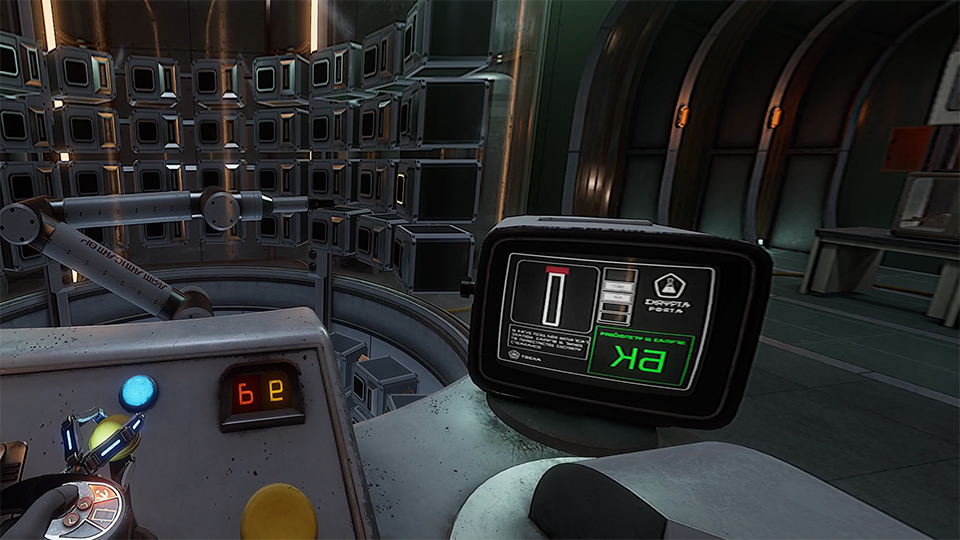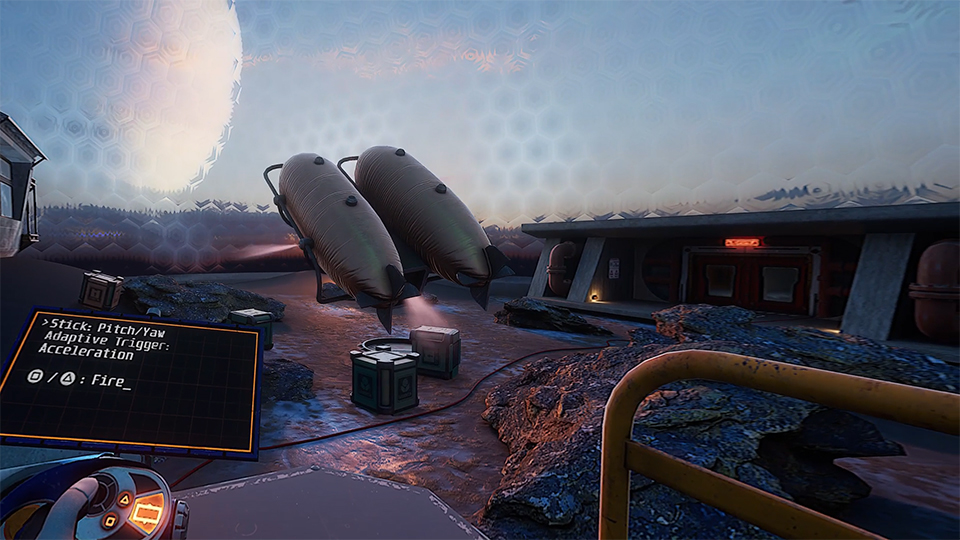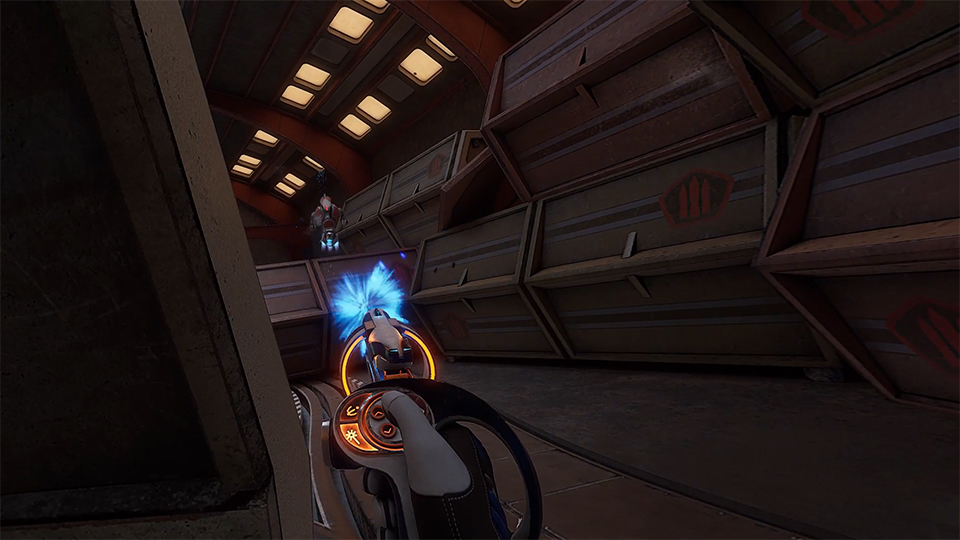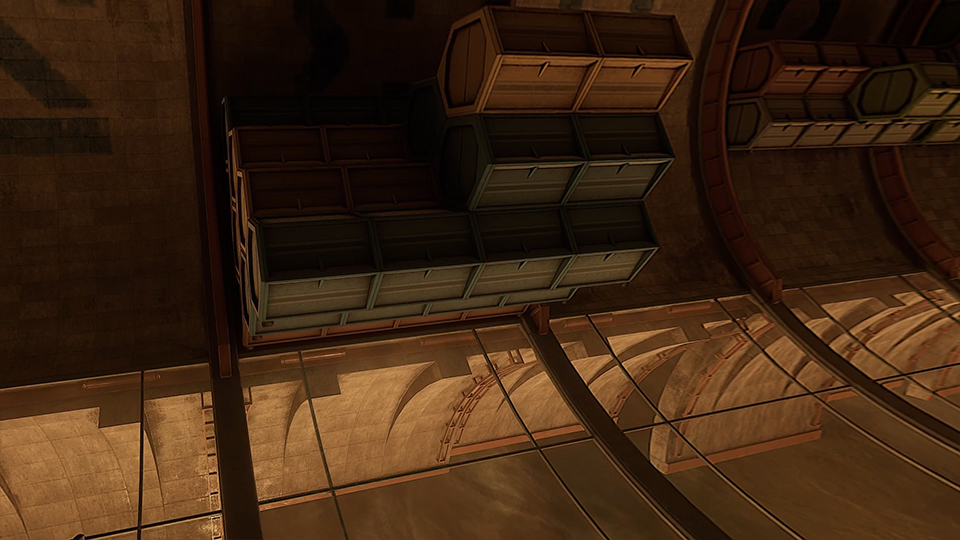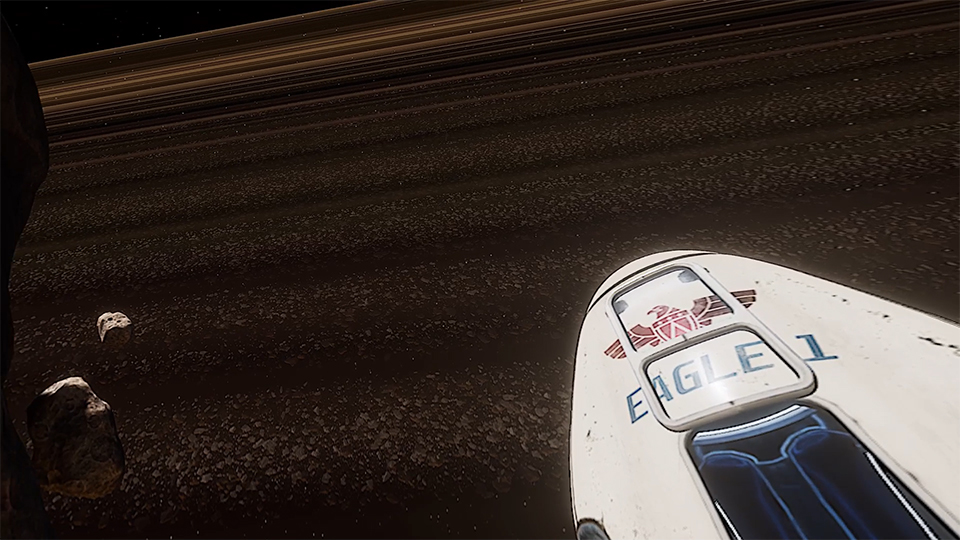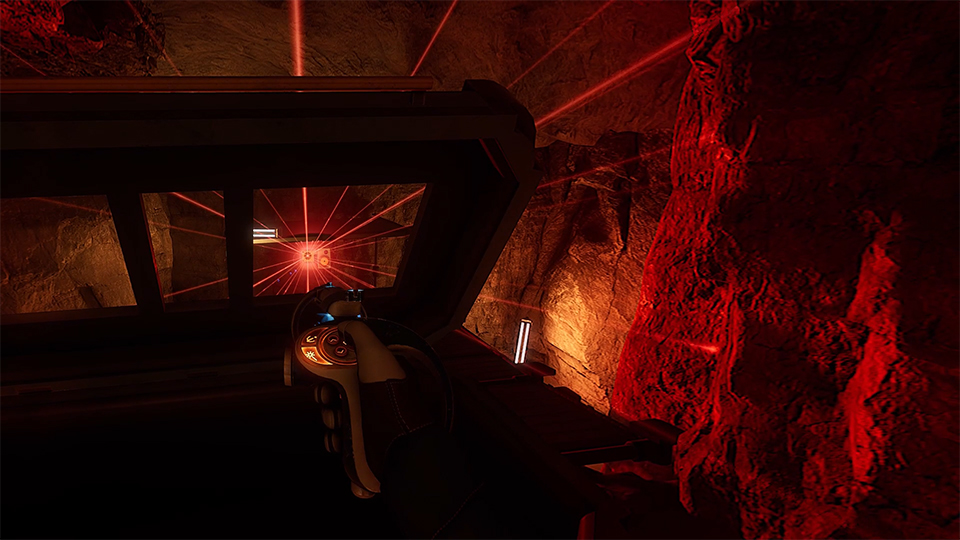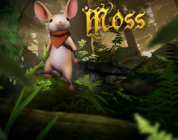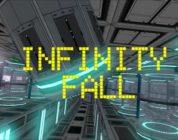Developer / Publisher – Vertical Robot
Price – US $29.99 / CAN $34.99 / EU €29.99 / UK £27.99
Release Date – May 17th, 2023
Input – 2 x Touch Controllers
Play Area – Seated, Standing, Roomscale
Store Links – PlayStation
Reviewed on – PSVR 2/PS5
Red Matter 2 is an action-adventure puzzler built from the ground up for VR headsets. This sequel to the award winning Red Matter sees players taking on the role of Sasha, a new character from the one we played as in the original title. Still in space and still seeking answers about the mysterious Red Matter, this sequel is a mostly standalone story that builds on the first game’s lore while taking the series into new heights gameplay wise, often feeling like something made by Valve themselves. This is the premium VR that PSVR 2 headsets have been looking for.
If you’ve been following my content on the VR Grid or on Shugghead Gaming before that then you know I’m not much of a VR puzzle game guy. However, Red Matter back on the original PSVR was a stunningly beautiful VR game that tapped into my deep love of all things sci-fi and was one of the few PSVR 1 puzzle games I can honestly say I truly enjoyed playing. Enter Red Matter 2, a game that was previously available for the past year over on the Quest 2 and PC. This follow up title once again sees the story take place during a fictional riff on the 80’s cold war era, complete with 80’s space tech and architecture. I don’t want to spoil anything by diving too much into the story here, but here in Red Matter 2 you are awakened in a lunar base by an undercover operative and tasked with uncovering the secrets of the mysterious Red Matter. Your search for answers takes you across the solar system to multiple outposts following the trail of someone from your past. The story here, while mostly standalone, does not require you to have played the first game, but you do benefit from having played the first game and understanding the backstory of the aforementioned Red Matter in greater detail.
Jumping into the gameplay side of things, I am happy to report that Red Matter 2 has taken the core movement and gameplay mechanics of the first title and improved on them in every way. First and foremost the movement speed has been increased from the first game’s rather plodding pace, finally allowing players to run. Additionally, the first game’s jetpack, which was mostly a glorified teleportation device, has been reworked to offer players the sensation and utility of actually controlling a jetpack. In fact, this rework of the jetpack has now become a key gameplay mechanic as the sequel has now included a generous amount of platforming sections that are both fun to play with and often key to solving certain puzzles. The jetpack is limited in its thrust time and also requires a bit of skill in learning how to sustain a glide pattern, and I found it a great gameplay addition this time around. And honestly gameplay additions are a real unexpected treat for me here in Red Matter 2, as admittedly I always felt that the first game could have benefited from a bit more gameplay diversity outside of its strict focus on puzzles. Here in the sequel, that’s exactly what I got, as developer Vertical Robot has really expanded the gameplay offerings in the sequel, not only offering players expanded movement mechanics, but also throwing in gun combat, stealth sections and a focus on in game physics that honestly brought to mind games such as Half Life Alyx and BoneLab at times.
Combat, which isn’t introduced until the halfway point of the game was truly a welcomed addition and is done so in a way that enriched the overall gameplay experience and scope, but without suddenly making Red Matter feel like it had abandoned its puzzle roots. Your gun attachment is fun to use, feels awesome with the PSVR 2 haptics and is also used to assist in certain puzzles, so for me this was a very welcome addition. Combat itself isn’t too complex, mostly revolving around taking out the odd defense droid, but these droids aren’t to be taken lightly; the fact that your gun can overheat adds just enough nuance to the gunplay to keep you weaving and ducking. Additionally, your earlier time in the game has you sneaking around avoiding deadly motion turrets, so when you do finally get a gun, it’s fun to finally be able to get on the offense with them.
Now as for the puzzles themselves, I would say they are a little simpler than in the first game, with the game having less brain busting puzzles that felt difficult just for the sake of being a puzzle. The game has wisely (in my opinion) opted to make the puzzles in the sequel feel more organic to the story, and in doing so makes the puzzle work more interesting and more intuitive. Many puzzles have you trying to recreate experiments for information or break into some part of a facility in order to keep moving forward. These puzzles often utilize the game’s new gameplay mechanics and it makes for a game that feels more like an adventure than just a puzzle game.
Bringing everything together here in Red Matter 2 is its excellent use of physics and the astounding polish that developer Vertical Robot put into the way in which the player interacts and moves around the world. I’ve said it before and I’ll say it again, playing Red Matter 2 often felt like playing a Valve game, and if someone had told me that Red Matter 2 was made by the same team that made Half Life Alyx and their follow up had been a puzzle focused, sci fi adventure? I would have believed them, the game feels that well made.
Reinforcing this feeling of Red Matter coming off as a Valve game is also of course the absolutely beautiful visuals that easily put Red Matter 2 into a similar visual category as Half Life Alyx. The first Red Matter on the PSVR 1 running on the PS4 Pro was a remarkable achievement, as was Red Matter 2 running on the Quest 2. Vertical Robot seems to know how to push hardware to levels it shouldn’t and Red Matter 2 on the PSVR 2 gives even the PC version of the sequel a run for its money. Running at 120 FPS natively with no reprojection and utilizing the PSVR 2’s foveated rendering techniques for improved resolution, Red Matter 2 is without a doubt one of the best looking VR games I’ve ever played on any VR platform. Running smooth as butter, with draw distance for days, Red Matter 2 doesn’t have a jagged edge in site, and it does this complete with AAA quality texture work and a lighting system that simply needs to be experienced in order to be fully appreciated.
Another area where Red Matter 2 supersedes its predecessor is in the variety and size of its locations and set pieces. Traveling from planet to planet, we get to see a variety of different facilities, each with its own unique flavor. From some vast and brilliant Hollywood-esque sets and the underground caves of Jupiter’s moon, to the mysterious Soviet labs studying the Red Matter, the sci-fi fan in me loved each and every minute venturing around this rich, quasi-futuristic world Vertical Robot has created for us. We rarely get to experience VR games with this much visual polish, and the only thing bad about playing Red Matter 2 was how high it sets the bar for future PSVR 2 games. Vertical Robot is not a AAA studio and is in fact a rather small studio in comparison, yet what they have pulled off with Red Matter 2 is essentially VR eye candy, making Red Matter 2 an absolute showpiece for the PSVR 2’s visuals moving forward.
Sound wise Red Matter 2 manages to keep the same level of quality seen in its visuals, with an absolutely fantastic musical score that, while limited in its variety, brilliantly sets the tone of the game with an epic score drenched in Jerry Goldsmith-esque moments reminiscent of the first Alien film. (Which, coming from me, is the highest compliment I could give a sci-fi musical score.) Fortunately the rest of the audio design is similarly fantastic, as is the voice work that drives the games narrative forward, which beautifully compliments the polished gameplay and incredible visuals for a very pristine VR offering.
This brings me to my final thoughts and final review score. Clocking in at a gameplay length of about 4-5 hours, my only real complaint about Red Matter 2 is that there isn’t more of it. Hard core puzzle enthusiasts may be a little disappointed by the sequel’s broader focus which sees the gameplay opened up to include platforming and combat moments, but personally I think Red Matter 2 feels like a more complete game because of it. We all too rarely see this level of polish across gameplay, visuals and audio design and I mean it when I say that playing Red Matter 2 on my PSVR 2 was a privilege. Taking full advantage of the headset’s eye tracking capabilities to boost the games resolution in addition to great utilization of the head and controller haptics, the PSVR 2 version is undoubtedly the best way to play Red Matter 2.
It’s a must buy.

